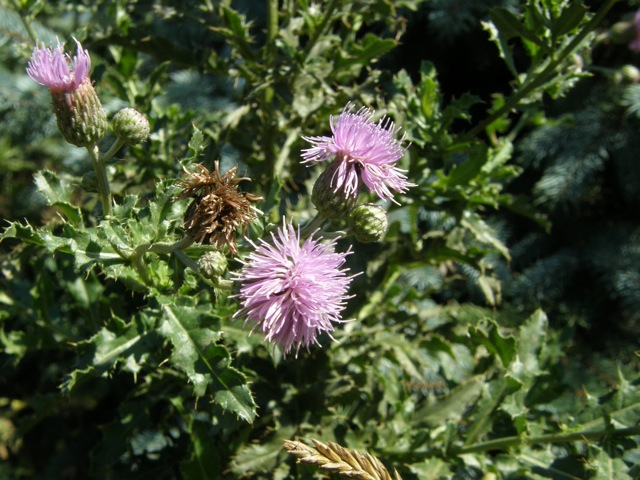Asteraceae, the daisy, sunflower or composite family.
Description:
Plant:
Erect, branching, spiny-leafed plants to 5', with small, pink/magenta
flower heads, often growing in dense stands.
Stems are sometimes ridged, but mostly non-prickly.
Flowers:
Pink-magenta heads composed entirely of ray flowers, arising from a swollen
base covered with prickly bracts. Flowers in terminal groups of usually 2-8.
Leaves:
Alternate, ovate to lanceolate, lobed and toothed, wavy-edged and very spiny, to 8".
Fruit:
Dry seeds attached to silky hairs - the classic "thistledown".
Blooming:
Mainly June-August, but straggling into September and October.
Habitat:
Fields, waste areas, roadsides.
Comments:
A hardy perennial plant that spreads underground and can be hard to eradicate.
Introduced from Europe by way of Canada, hence the common name.
Despite its spiny nature, the plant, along with other thistles, is edible.
The young stems can be peeled and the soft core cooked and eaten.
The artichoke is a giant relative.
Where to find it:
Patches near the northwest border of the park near the Islamic center and
adjacent professional buildings.
